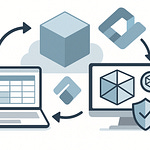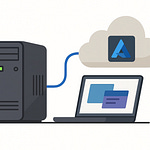What if your contact center could recognize a frustrated customer before they even said a word? That’s not science fiction—it’s sentiment analytics at work inside Dynamics 365 Contact Center.
Before we roll initiative on today’s patch boss, hit subscribe so these briefings auto-deploy to your queue instead of waiting on hold.
Here’s how it works: your AI agent scans tone, word choice, and pacing, then routes the case to the right human before tempers boil over. In this walkthrough, we’ll break down sentiment routing and show how Copilot agents handle the repetitive grind while your team tackles the real fights.
And to see why that shift matters, you first have to understand what life in a traditional center feels like when firefighting never ends.
Why Old-School Contact Centers Feel Like Permanent Firefighting
In an old-school contact center, the default mode isn’t support—it’s survival. You clock in knowing the day will be a long sprint through tickets that already feel behind before you even log on. The tools don’t help you anticipate; they just throw the next case onto the pile. That’s why the whole operation feels less like steady service and more like emergency response on loop.
You start your shift, headset ready, and the queues are already stacked. Phones ringing, chat windows pinging, emails blinking red. The real problem isn’t the flood of channels; it’s the silence in between them. Sure, you might see a customer’s name and a new case ID. But the context—the email they already sent, the chat transcript from ten minutes ago, the frustration building—is hidden. It’s like joining a campaign raid without the map or character sheets, while the monsters are already rolling initiative against you.
That lack of context creates repetition. You ask for details the customer already gave. You verify the order again. You type notes that live in one system but never make it to the next. The customer is exasperated—they told the same story yesterday, and now they’re stuck telling it again. Without omnichannel integration, those conversations often don’t surface instantly across other channels, so every interaction feels like starting over from level one.
The loop is obvious. The customer gets impatient, wondering why the company seems forgetful. You grow tired of smoothing over the same irritation call after call. The frustration compounds, and neither side leaves happy. Industry coverage and vendor studies link this very pattern—repetition, long waits, lack of context—to higher churn for both customers and agents. Every extra “let me pull that up” moment costs loyalty and morale.
And morale is already thin on the contact center floor. Instead of problem-solving, most of what you’re doing is juggling scripts and copy-paste rituals. It stops feeling like skill-based play and starts feeling like a tutorial that never ends. Agents burn out fast because there’s little sense of progress, no room for creative fixes, just a queue of new fires to stamp out.
Supervisors, meanwhile, aren’t dealing with strategy—they’re patching leaks. Shaving seconds off handle times or tweaking greeting scripts becomes the fix, when the real bottleneck is the fragmented system itself. You can optimize edges all day long, but a leaky bucket never holds water. Without unified insight, everyone is running, but the operation doesn’t feel efficient.
The consequence? Customers lose patience from being forced into repeats, agents lose motivation from endless restarts, and managers lose stability from the turnover that follows. Costs climb as you’re stuck recruiting, training, and re-training staff just to maintain baseline service. It’s a cycle that punishes everyone involved while leaving the root cause untouched.
So when people describe contact center life as firefighting, they aren’t exaggerating. You’re not planning; you’re barely keeping pace. The systems don’t talk, the history doesn’t follow the customer, and the same blazes flare up again and again. Both customers and agents know it, and both sides feel trapped in a dungeon where the final boss is frustration itself.
Which raises the real question: what if we could spot the ember before the smoke alarm goes off?
How AI Learns to Spot Frustration Before You Can
Ever notice how some systems can clock someone’s mood faster than you can even process the words? That’s the deal with sentiment AI inside Dynamics 365 Copilot. It isn’t guessing from body language—it’s analyzing tone, phrasing, pacing, and the emotional weight behind each line. Where you might get worn down after a full day on phones or chat, the algorithm doesn’t fatigue. It keeps collecting signals all the way through.
On the surface, the mechanics look simple. But under the hood, it’s natural language processing paired with sentiment analysis. Conversations—whether spoken or typed—are broken down and assessed not just for meaning, but for emotional context. “I need help” registers differently than “Why do I always have to call you for this?” The first is neutral; the second carries embedded frustration. Those layers are exactly what the system learns to read.
Now picture being eight hours deep into a shift. You’ve dealt with billing, a hardware swap, a password reset gone sideways, and one customer who refuses the steps you already emailed. At that point, your focus slips. You skim too fast, you miss that slight rise in tension during a call. Meanwhile, the AI has no such blind spots. It sees the all-caps chat with “unacceptable” three times and recognizes it’s a churn risk. Rather than waiting for you to stumble on it, the platform nudges that case higher up the queue.
That’s where routing changes the game. Traditionally, it’s first come, first served. Whoever is next in line gets answered, regardless of urgency. With sentiment models active, the order shifts. Urgent or emotional cases are surfaced sooner, and they land with the agents who are best equipped to diffuse them. If you want a visual, imagine the system dropping a glowing marker on the board—the message that this encounter is boss-level, not a background mob.
The principle isn’t mystical—it’s applied pattern recognition. Dynamics 365 processes text and speech through NLP and sentiment analysis, turning words, phrasing, and even pauses into usable signals. These signals then guide routing. Angry customer mentions “cancel”? Escalate. High-value account gets impatient? Prioritize. And supervisors aren’t locked out of the process; they can tune those rules. Some teams weight high-value customers most, others give churn threats top priority. It’s just configuration, not a black box guessing on its own.
And while the flashy bits often focus on keywords, voice and transcript analytics can also surface things like long pauses or repeated clusters of heated terms. These aren’t always hard-coded red flags, but they’re added signals the model considers. Where you might chalk up a pause to background noise, the system at least tags it as something worth noting in context with everything else.
So when you hit that inbox or call queue, you’re not opening blind. There’s a sentiment indicator already in place—a quick read on whether the person is calm, annoyed, or ready to escalate. It doesn’t do the talking for you, but it tells you: this one’s heating up, maybe skip the script fluff and move straight into problem solving. That early signal cuts off extra rounds of repetition, saving both sides from another cycle of frustration.
It might sound like a small optimization, but scale changes everything. Across thousands of contacts, AI-driven triage reduces wait times, gets high-risk cases in front of senior agents, and lowers stress since you’re not constantly guessing where to focus first. Dumb queues vanish. Instead, they’re replaced by intent-driven queues where the hardest fights land exactly where they should.
And once you’ve got that emotional heatmap running, your perspective shifts. Sentiment detection isn’t just about spotting problems—it’s about freeing you to act strategically. Because when AI can keep watch for spikes of frustration, the obvious next step is: what else can it take off your plate? Could it handle copying data, logging details, and grinding through the endless ticket forms?
That’s the next piece of the story, where these systems stop being mood readers and start acting like tireless interns, carrying the paperwork so your team doesn’t have to.
Autonomous Agents: Your New Support Interns That Never Forget
Think of it this way: sentiment spotting tells you which cases are heating up. But what happens once those cases hit your queue? That’s where autonomous agents step in—digital interns inside Dynamics 365 that handle repetitive case work so you don’t have to micromanage the clerical side. They don’t lead the party, but they keep things organized and consistent, sparing your live team from the grind.
Microsoft breaks them into three main types: the Case Management agent, the Customer Intent agent, and the Customer Knowledge Management agent. Case Management focuses on creating and updating tickets. Customer Intent builds out an intent library from historical conversations, so the system can better predict what a customer actually needs. Knowledge Management, meanwhile, generates and maintains the articles your team leans on every day. Each one automates a specific slice of the service loop.
Take Case Management first. Normally, every ticket requires you to type out customer details, set categories, and match timestamps. The AI parses the text, populates fields, and organizes entries against the right tags. When you configure rules, it can trigger follow-up actions or even auto-resolve straightforward scenarios—like closing a case once a customer confirms delivery. But here’s the caveat: during rollout, most teams keep these steps in “assist mode.” That means the agent drafts the updates, and a human confirms them. Full autonomy isn’t all-or-nothing; you dial up the trust as you see it behaving correctly.
Next, the Knowledge Management agent. Knowledge bases often fall into chaos—duplicates, half-finished drafts, and outdated content scattered everywhere. The AI checks context, flags duplicate entries, and automatically routes content as either internal-only guidance or public-facing FAQ. Admins can set safeguards: an AI draft can’t publish externally until a reviewer approves, for example. Start conservative. Let the agent build drafts and clean clutter while your team decides whether a new article is ready for public eyes. Once you’re comfortable, you can ease those restrictions without the cleanup turning into a two-week committee review.
Then there’s Customer Intent. This one’s about cataloging what customers are really asking over time. Instead of slogging through transcripts trying to guess intent—billing vs. warranty vs. password reset—the AI builds an intent library across channels. When a new case matches a known pattern, it can recommend next steps or pre-fill likely resolutions. Again, trust comes from verification. Keep it in draft mode so you can confirm its calls. Over time, as accuracy improves, you start speeding up responses without losing control of quality.
The result across all three agents is similar: less time shuffling windows, more time actually engaging. The AI handles the log entries, intent matching, and knowledge housekeeping in the background. You handle the human side—listening, empathizing, deciding how to resolve the actual problem. This handoff matters because it clears minutes from each interaction. Multiply that by hundreds of cases, and suddenly the workload feels less like frantic button-mashing and more like directed strategy.
Of course, governance isn’t optional. Treat agent rollout like you’d treat a junior hire. You wouldn’t give a brand-new teammate global admin rights on day one. The same applies here: turn on audit requirements, keep auto-closes behind approval gates until you trust the system, and monitor performance during those first weeks. By building in oversight, you ensure the AI supports the team rather than surprising it.
Used well, these digital helpers backstop the messy parts of service: missed callbacks, untagged categories, tickets that vanish into limbo. They keep the ledger accurate and the knowledge base uncluttered. But they’re not here to replace judgment or empathy. They just clear the board so humans can spend their energy where it actually shifts outcomes.
All of which is helpful—but only if you can actually jump into a customer interaction with the right background at hand. Case creation is one thing, but you still need fast, relevant context the moment the call or chat begins. Otherwise, you’re asking your customer to start from scratch. And few things burn patience faster than repeating the same story five times to five different people.
Conversation Superpowers: Never Ask ‘Can You Repeat That?’ Again
When agents get handed half a puzzle, progress slows. That’s why Copilot arms you with what I like to call “conversation superpowers”—tools designed to keep context intact and stop you from scrambling mid-call.
Instead of making you scroll through tangled logs, Copilot compiles structured conversation summaries. Each case form includes the essentials: customer details, the product in play, relevant history, and whether sentiment is calm, tense, or explosive. For chats and transcribed voice calls, these structured summaries save minutes of backtracking. Operationally, that matters—less searching, fewer verification questions, and quicker movement to actual solutions.
Think of it like walking into a new session with a campaign journal already waiting. You’re not leafing through scattered notes to figure out what went wrong two quests ago. You’ve got the key events, outcomes, and mood laid out in one glance. When a frustrated customer comes in on voice, you can skip the polite archaeology of “Have we talked before?” and instead go right to resolution.
But the summaries are only half of this story. Copilot also brings in “Ask a Question,” which is exactly what it sounds like. No rigid Boolean searches, no guessing exact phrasing from some dusty knowledge entry. You ask it naturally, just like you’d ping the teammate across the cubicle. “What’s the warranty policy for this model?” or “How do I escalate a shipping complaint?” The tool answers by pulling from internal knowledge bases and, if configured, from up to five trusted external domains.
That means you get answers instantly, even while the customer is mid-sentence. Dead air shrinks, and support doesn’t stall out while you dig through outdated manuals. On a natural 20, the system even hands you a polished article that’s ready to share straight with the customer—branding intact, policy accurate, no need to reword.
And it doesn’t stop there. To keep the tempo in conversation, Copilot also drafts responses. You can:
Ask a Question in free-form language, follow up naturally, and refine the answer.
Get Copilot to draft chats or emails with context baked in, then edit before sending.
View knowledge sources alongside the answer, so you and the customer know where it came from.
Those one-liners may not sound flashy, but they’re the difference between clumsy silence and smooth delivery. Transparency grows because customers see you pulling from vetted rulesets instead of vague hand-waving. And you aren’t trapped doing Ctrl+F across six wikis just to look prepared.
Of course, governance doesn’t disappear. The AI drafts replies based on what it knows—but you should still review before sending. That’s both common sense and best practice. As every sysadmin learns: trust, but verify. Let the machine tee up the play, but make the final call yourself before it lands in the customer’s inbox.
The result? Agents stay locked in the flow of conversation, customers feel heard without delays, and cases stop stretching into endless cycles of “hold on while I check.” You’re not juggling windows or apologizing for missing context. You’re listening, responding, and moving the ticket toward closure with the right information at hand. To the customer, it looks seamless—as if you already had the lore memorized.
That shift changes service at scale. Each encounter flows instead of stumbling. Your team conserves focus because the scut work of recalling and collecting data is handled. The customers enjoy continuity because you’re not interrupting with repeats or stalling with long silences. And collectively, the dreaded follow-up question—“Can you restate your issue?”—fades into history, right next to backup tapes and dial tones.
That’s the real power of conversation superpowers—not just cutting repetition, but keeping everyone aligned in real time. And once the dialogue runs this smoothly, you can start thinking about the bigger transition: what would it look like if the whole contact center moved from standing in queues to actually predicting who needed help first?
From Call Queues to Proactive Engagement Engines
Picture the old model: queues worked like a tavern line—first in, first out. No matter if it was a billing question or a meltdown brewing, everyone waited the same. Agents grabbed the next number and braced for impact. That was service without context, and everyone paid the price.
The modern approach flips the board. With sentiment-based routing, predictive analytics, omnichannel orchestration, and supervisor forecasting dashboards, you don’t just shuffle tickets—you build a battle plan in real time. Instead of blind order-taking, the platform acts as a sorting engine, tagging urgency, emotion, and value so the right cases land in front of the right agents at the right time.
Take sentiment-based routing. If the system flags frustration, that case jumps the line toward an escalation-trained agent. A high-value customer dropping red-flag language? They’re moved ahead of low‑impact asks so their patience doesn’t evaporate. Agents aren’t left guessing—they’re positioned where they can defuse situations before anyone rage‑quits.
Predictive analytics then add foresight. By crunching live traffic and historical patterns, the platform surfaces risks before they snowball. If a product defect is sparking calls across a region, churn‑risk alerts appear without waiting for a weekly report. And the same math can identify opportunity, not just threats. Someone calling with interest in an accessory or service? The system can nudge the conversation toward an upsell at exactly the right moment.
Supervisors get something even more valuable: time. Forecasting dashboards show when backlogs are likely to pile up. Instead of discovering chaos hours too late, leaders see the curve of incoming work ahead of schedule. If staffing will be thin three hours out, schedules can shift before the line ever buckles. This is more than a quality‑of‑life perk—it’s operational insurance that keeps morale and service levels from collapsing under sudden spikes.
Omnichannel orchestration ties it all together. Customers don’t think in silos—they hop from SMS to chat to voice without caring which backend system you use. Dynamics 365 Contact Center integrates those paths so agents inherit a consistent record, not fragmented scraps. A chat conversation continues seamlessly on voice. An escalation from email carries history over to the live agent. It’s the difference between starting at level one every encounter and arriving with the whole dungeon map in hand.
Now put those pieces together. A VIP logs repeated complaints on chat. Sentiment routing tags the tone as urgent, predictive analytics know this customer has a history of high spend, and omnichannel orchestration ensures the next available voice agent sees every prior attempt at contact. The supervisor dashboard, meanwhile, warns of rising volume in that account tier, so extra headcount is shifted proactively. Instead of another lost account, you’ve got a salvageable situation handled by the best‑positioned agent.
And this shift isn’t just theoretical. Companies using Dynamics 365 Customer Service have reported huge drops in backlog and faster handle times. One example Microsoft highlights is Lexmark, which turned customer engagement from a reactive chore into a proactive advantage using these same tools. Integrating AI agents and predictive dashboards gave them both efficiency savings and sharper insight—proof this isn’t an abstract roadmap but an approach already delivering gains in the field.
Culture changes when systems stop letting you down. Agents feel less like ticket clerks and more like problem‑solvers because they’re given priority work that matters. Supervisors stop pulling band‑aids and start tuning strategy. Customers feel recognized because their urgency is reflected in how fast they’re served. A queue system that once drained patience on all sides evolves into an engine aligned around value and loyalty.
So when you think of queues now, don’t picture a tavern line at all. Picture a branching flow that adapts in real time, guided by sentiment, urgency, and predictive insight. The platform doesn’t just serve tickets faster—it recalibrates entire interactions so every player at the table knows their role before the dice hit the table.
And that cue sets up the final takeaway: AI in Dynamics 365 isn’t out to replace anyone at the table—it’s there to change how your team plays the game.
Conclusion
AI in Dynamics 365 Customer Service isn’t here to roll for your agents—it’s here to buff them. Automating the grind shifts their focus from checkbox rituals to actual strategy. Sentiment detection flags trouble early, routing the right cases to the right hands. Agents become tacticians, not ticket clerks. But remember: even buffed interns need guardrails. In production you need policies, governance, and oversight.
If you’re a leader planning next steps, the path is simple: assess business needs and pain points; prepare your data and infrastructure; pilot Copilot/agents in supervised mode with governance; measure and iterate.
Boss down, blue screen banished. If today’s run gave you ideas for a pilot, hit subscribe. Share this with your party before the CFO aggro’s again—you’ll want that advantage next encounter.











